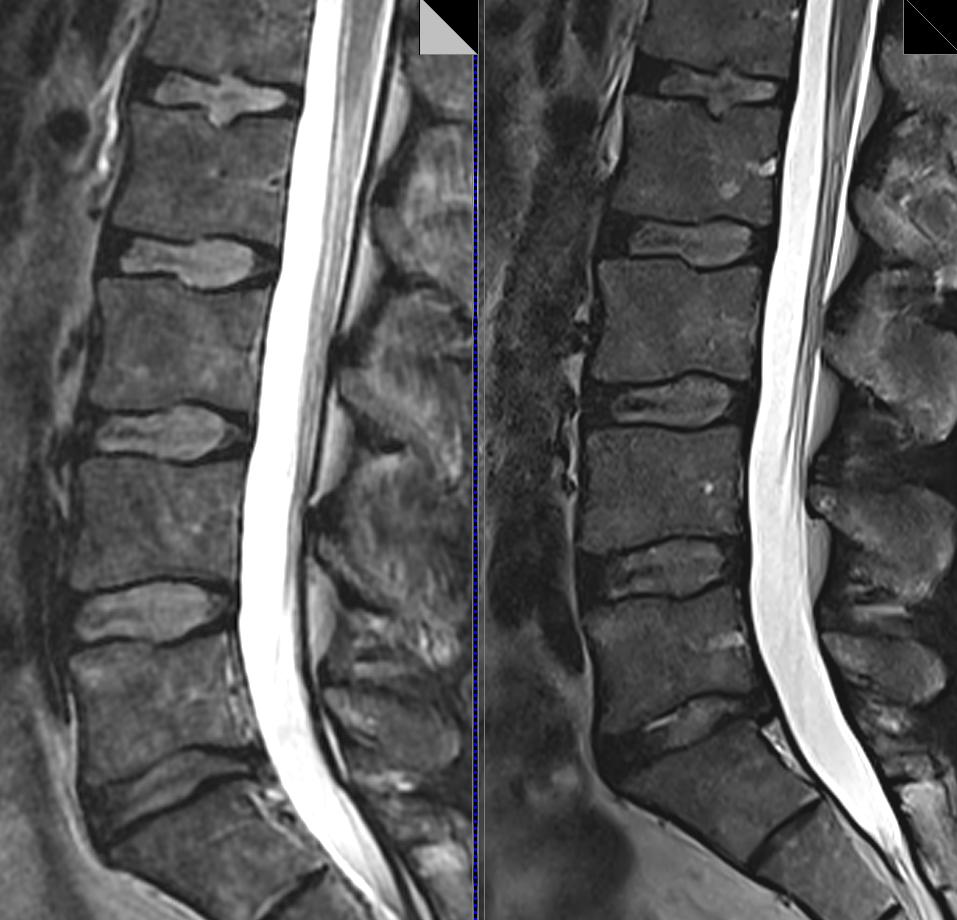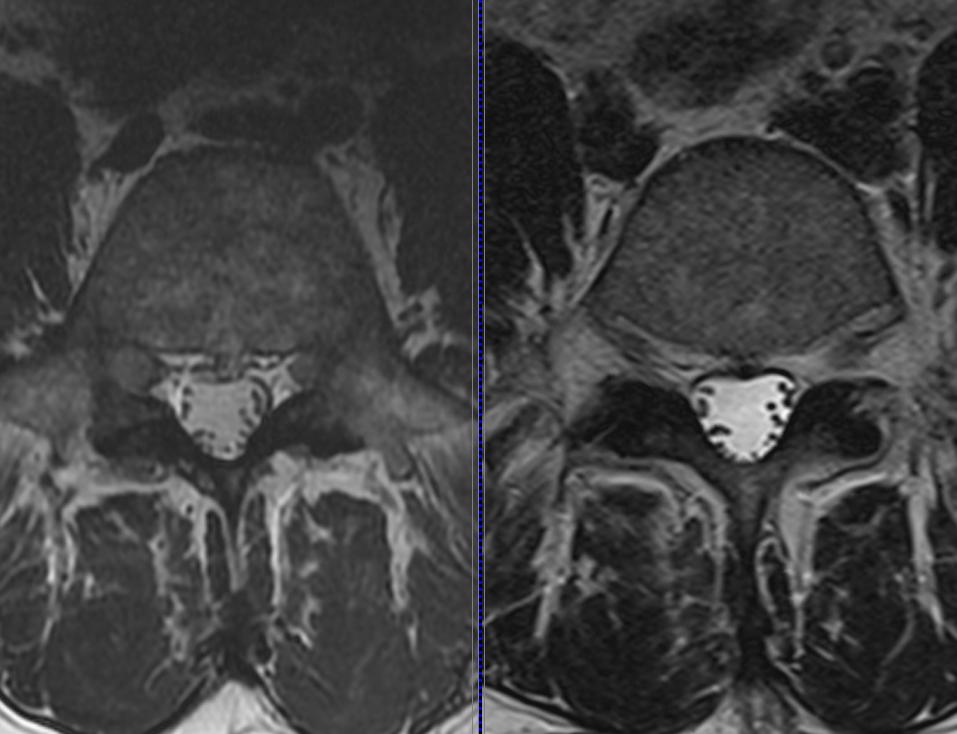3T MRI not Superior to 1.5T
Magnetic resonance imaging, or MRI, uses the power of a magnetic field to image the soft tissues of the body without any radiation. The magnet’s strength is measured in Teslas.
The state-of-the-art Open Bore MRI at AIM features a 1.5 Tesla (or 1.5T) magnet, which is currently the gold standard worldwide. There are various strengths available on the market, all of which have pros and cons.
There are 3T scanners in private clinics in Vancouver claiming to have “twice the resolution” of a 1.5T magnet. This is not true. In some cases, (including spine imaging) these 3T scanners are actually imaging with only half the resolution of an AIM scan. Going by Tesla strength alone, one may assume a 3T scanner is superior to a 1.5T–1.5 is half of 3, after all–but this is not the case. There are many variables which limit this claim. In an ideal scenario a 3T only adds a 37% increase in signal. Unfortunately, this is often offset with a reduction in resolution which is necessary to prevent the patient’s body from overheating.
Below is a comparison of a private MRI 3T scanner vs. AIM Medical Imaging’s high resolution 1.5T scanner in imaging of a lumbar spine (the most common MRI examination):

3T (left) vs. 1.5T (AIM Medical Imaging, right) MRI of Lumbar Spine. The quality of AIM’s resolution is clearly superior.
| Sagittal T2 | Field of View | Matrix | Voxel Size | # of Slices per cm |
| AIM Medical(1.5T) | 290 | 448x336x3= | 1.675 mm₃ | 3 |
| Others(3T) | 320 | 416x320x4= | 3.07 mm₃ | 2 |
What is a slice? MRI images the body (or a portion of it) in increments, which are called slices. As you can see from the above table, AIM’s scanner images 5 slices per 1.5 cm as opposed to 3 slices at other clinics. The thinner the slice, the more opportunity to look closer at the tissues being imaged; thus, the claim that 3T offers twice the resolution of 1.5T is grossly misrepresented.

3T (left) vs. 1.5T (AIM Medical Imaging, right) MRI of Lumbar Spine. Again, the superior quality of AIM’s resolution is clearly visible.
Some other limitations of 3T imaging are:
-3T requires heating the body 4x more than a clinically accepted 1.5T scanner. This is particularly concerning for areas of the body such as the spine, abdomen or pelvis.
-Children and the elderly are more susceptible to changes in body temperature, and are therefore more likely to experience extreme overheating due to a 3T scan. This is problematic because the majority of MRI patients are seniors. However, it is not only these two age groups that may be affected by the high temperatures associated with a 3T scan. Overheating can become an issue at any age, especially when it is sensitive organs that are being imaged.
– For spinal cord scans, 3T raises safety concerns such as stress on the patient’s heart. You may be surprised to learn that studies have shown image quality of 3T is inferior to 1.5T when imaging the abdomen, pelvis, spine and whole body.
-Finally, there is no 3T magnet available in Canada which performs Whole Body DWI sequences for advanced cancer detection.
Co-authored by Wayne Picker, Head MRI Technologist at AIM Medical Imaging.

